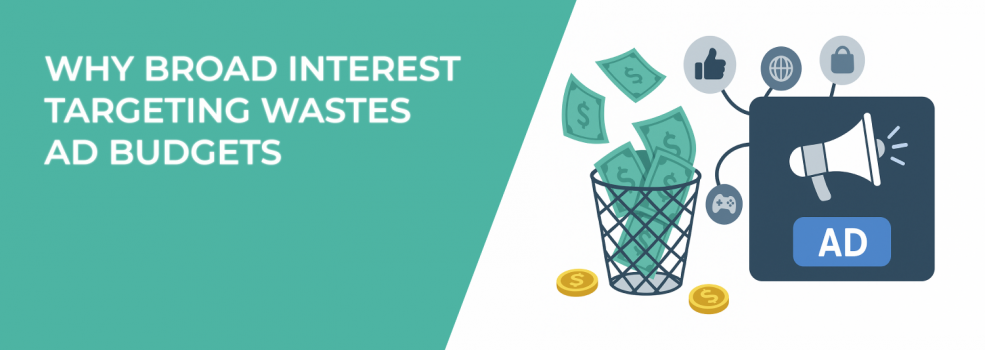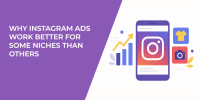Broad targeting seems simple — pick a category, reach millions. But it usually wastes money, showing ads to people who will never buy. Impressions go up, costs rise, and conversions stay low. If you’re getting clicks without sales, broad targeting is likely the cause.
Let’s see why.
How Broad Interest Targeting Works on Major Platforms
Ad platforms track almost everything users do — searches, likes, views, and clicks — then group people into interest categories. Choosing a broad category like fitness, travel, or entrepreneurship instantly pulls in millions who interacted with related content at some point. It looks like a rich audience, but the problem is how loosely these interests are defined:
A teen who follows fitness memes is tagged as “interested in fitness.”
-
A retiree who clicked a cruise ad years ago is still “interested in travel.”
-
A manager who skimmed one startup article is labeled “entrepreneurship.”
Technically, they count as “interested,” but most have no intent to buy. As a result, your ads reach millions with little real interest, wasting impressions and budget.
Why Impressions Get Wasted
Broad campaigns deliver big numbers — reach, impressions, clicks — but they rarely reflect real intent. Here’s what usually happens:
-
Low engagement: ads land in feeds where users don’t care, so CTR sinks and budget is wasted.
-
High costs: only a fraction are relevant, so each conversion costs more.
-
Poor learning: broad signals confuse the algorithm, making future targeting less efficient.
The big reach looks good, but it usually hides weak performance and wasted spend.
Why Narrow Targeting Can Be a Better Choice
Many advertisers worry that narrowing targeting limits reach, but in practice it delivers stronger results. A focused audience reduces wasted impressions, improves algorithm learning, and makes ads feel more relevant — which means higher engagement, lower costs, and better conversions.
Narrow targeting isn’t about limiting growth; it’s about reaching the people most likely to buy.
Practical Steps to Narrow Your Targeting
Broad audiences often waste money. Smaller groups may look limited, but they usually deliver more clicks, engagement, and sales. Here’s how to do it:
-
Use engagement data: target people who liked, commented, or watched your videos — they’re more likely to respond than random users.
-
Create lookalikes: upload your customer list so the platform can find people similar to your best buyers.
-
Retarget website visitors: reach people who viewed key pages or abandoned carts, and use reminder ads to bring them back. Our guide on how to set up Facebook retargeting shows you how.
-
Exclude weak groups: filter out users unlikely to buy, such as casual browsers, students, or people outside your market.
These steps reduce waste, improve learning, and put your budget toward people most likely to convert.
An Advanced Way to Narrow Your Targeting
Beyond engagement, lookalikes, and retargeting, you can target followers and group members with LeadEnforce. These users show stronger intent than broad “interest” audiences — someone in a fitness group is far more engaged than someone who once liked a random post.
This comes with several benefits:
-
Higher relevance: ads match real interests.
-
Stronger engagement: members click, comment, and share more.
-
Better conversions: fewer wasted impressions, stronger ROI.
-
Cleaner data: clearer signals help algorithms optimize.
For details, see How to Build Your Target Audience from a Facebook Group.

